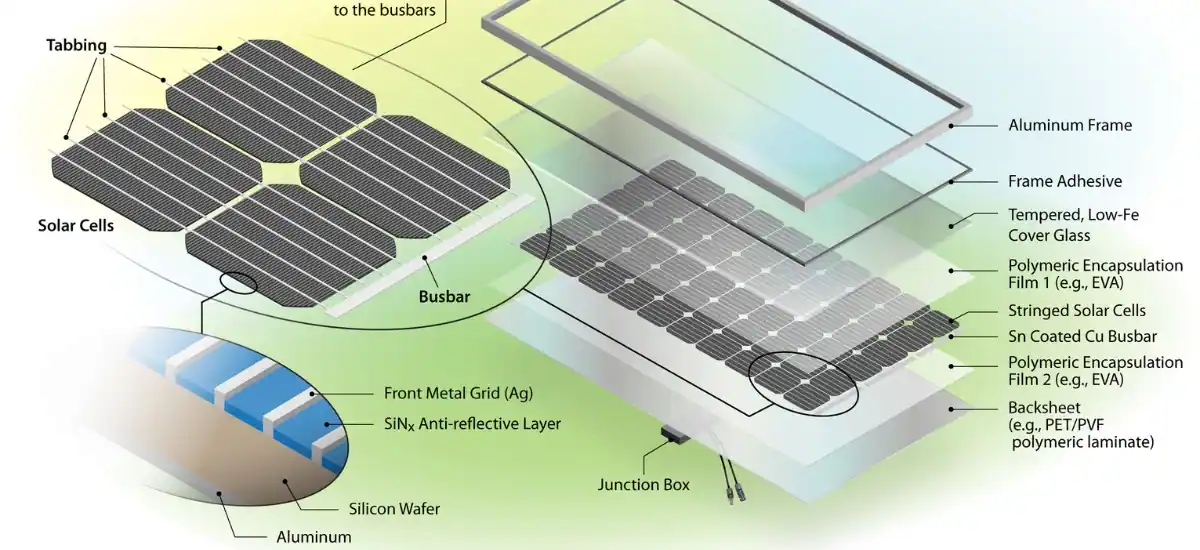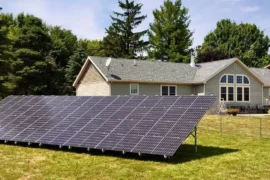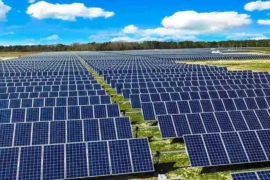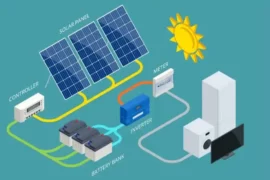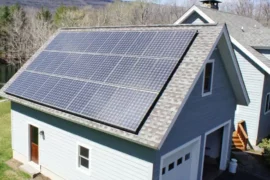If You Look For How Thick Should Eva Solar Film Be For a Module You Should Know Its Thickness And The Ways You Will Need To Improve Cable Insulation, Photovoltaic Lamination Of Glass.
The Rate Of Efficiency Is Used In Reaching Out To 20% And At Times It Hits To About 15% To 17%.
The Thickness Of The Eva Solar Film To Be Modules Is Seen To Range Between 0.3 Mm To 1.0 Mm. The Conventional Thickness Is Almost About 045 Mm To 0.02 Mm. But Before You Know What Eva Solar Panels Are Used For, You Must Know About What Eva is.
Eva Stands For Ethylene Vinyl Acetate. This Is A Material Which Is Good In Transmission And has Low Degradability To Sunlight. This Is Made Up Of Thermoplastic Polymer.
Once You Apply Heat To Assemble And Create An Encapsulating Agent, You Can Look To Form Sealing And Insulating Film All Around The Solar Cells.
The Solar Panels Are Made Of Silicon And The Chemical Element Tends To React To Other Molecules.
The Process Of Lamination Is Vacuum. The Temperature Of 152’c For 20 Minutes, The Solar Panels Encapsulates All The Components With No Air And Humidity With The Right Details.
The Thermoplastic Polymer Has Made Use Of In Solar Modules As One Of The Encapsulating Agents Since The Application Of Heat And Know About Eva What Is It.
What Are Solar Eva Encapsulants?
Solar Cell Testing Offers Classification Of Solar Cells With The Testing Of The Output Parameters With The Right Current And Voltage.
You, Will, Have To Define Eva First And Know How To Produce The Quality Of Solar Panels.
The Selected Test On Solar Cell Equipment Is Available In Getting Standard Requisites With The Best Process Of Illumination Unevenness Greater Than Repeatability Of 1%.
Cells Are Encapsulated Before Being Laminated With The Backsheet And Glass.
What Comprises The Eva Solar Encapsulants?
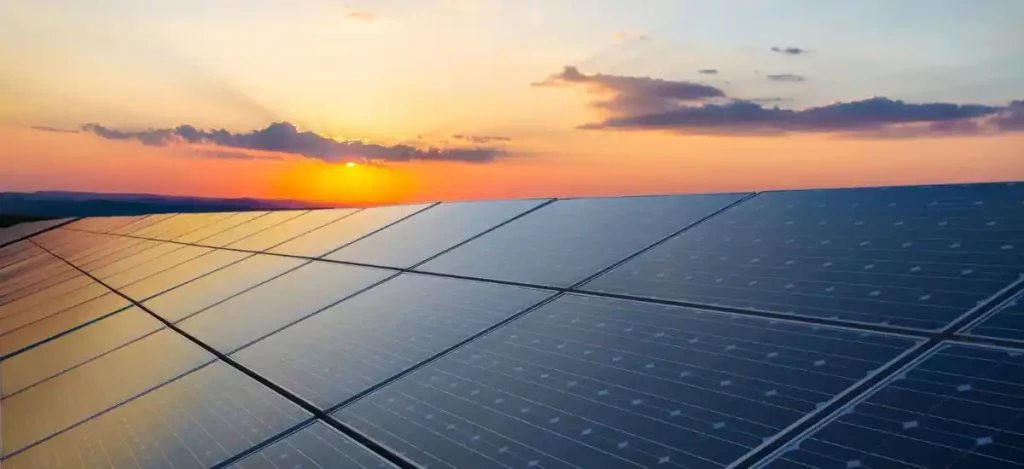
- Frame
- Glass
- Cells
- Eva
- Cells
- Back Sheet
- Junction Box
What Is The Process Of Solar Cell Front Welding?
- Solar Cell Front Welding
- Solar Cell Testing
- Solar Cell Test
- Laminated Laying
- Solar Panel Lamination
- Mounting Frame With Junction Box
- Trimming To Solidify The Pressure
- Solar Panel Tester
The Solar Cell String, The Glass, The Cut Eva, And The Bottom Plate Are Laid At A Specific Level To Prepare For Lamination After The Tandem Solar Cell Group Has Passed The Inspection.
To Strengthen The Binding Between The Glass And The Eva, A Primer Is Pre-Coated On The Glass.
When Laying, Make Sure The Solar Cell String, Glass, And Other Materials Are Positioned About One Another, Adjust The Space Between The Solar Cells, And Lay The Lamination Foundation.
What Occurs Assuming The Eva Is Of Low Quality?
When The Eva Is Of Low Quality, There Is More Focus On The Solar Generation That Is Placed On The Solar Module.
It Is One Of The Key Processes In Which Solar Generation Starts Also The Components Are Available With A Simple Layer Of Plastic Film At The Back Surface.
Eva Encapsulant Sheets Play A Very Important Role In The Prevention Of The Water And Dirt That One Can Have By Infiltrating The Solar Modules As Well As Creating Protection Of The Cell With The Softening Of The Adhesive Bonding Along The Cell.
What Happens If The Eva Is Of Poor Quality?
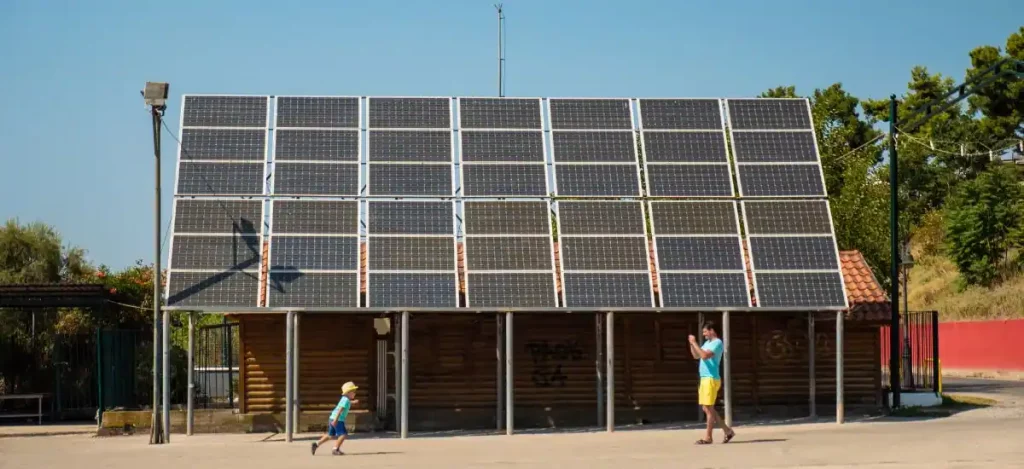
Suppose The Eva On The Solar Panel Happens To Be Of Poor Quality, The Lamination Process Must Be The Issue. The Silicon Wafer Comes Into Contact With The Water And The Air.
They Will Be Rich In Oxygen And Thus The Solar Panels Will Start To Oxidize. The Eva Panel Will Look Yellow And Brown Depending On The Case That It Has A High Content Of Oxygen.
Then What Is The Outcome?
The Board Has A Lower Level Of Proficiency That Will Lessen The Level Of Productivity Along The Whole Framework. The Board Starts With The Oxidization And Looks Yellow And Brown With A Contingent Case.
If The Problem Persists Even After This, The Solution Is To Change The Panel With A New One. The Sunlight Provider Sunlight Utilizes Eva Brands Along With Ensured Quality.
The Quality Control Cycle Is To Test The Unrefined Substance With The Reason For Every Part Of The Boards And With The Hardware Of The Production Line.
The Poe Maker Understands The Genuine Molecule Shipment Surpasses 200,000 More Than The Graph Shows The Following.
With The Reception Of Enormous Organizations W ith The Current Standards Of 0.32/0.3 Mm. When Smbb Comes In Style, The Heaviness Of The Eva Film In Solar Radiation Offers Breadth In Strip Recoils.
In This Case, The Estimation Here Is Directed In Light Of The 480gm/M2 As Per Its Weight. And, The Vulnerabilities In The Ongoing Turn Of Events.
How Can You Avoid This?
Users Can Prevent The Issue Of Eva Quality Getting Worse. The PV modules Are Composed Of Multiple Components that surround The Solar Panels. In Such Cases, Users Must Make Use Of Eva Encapsulant.
Take Help From The Solar Panel Supplier Who Can Test Each Raw Material That Is Received Using A Rigid Incoming Quality Control (Inc) Method. The Eva Brand Comes With Confirmed Quality.
For This Reason, The Eva Module Is About Using The Top Brands For All Of The Panels’ Parts, Including The Equipment In Our Production.
Frequently Asked Questions
Q1. What Is Poe In The Solar Panel?
Ans1. Poe In Solar Panels Stands For Polyolefin Elastomer. It Is Based On Encapsulant Solar Films.
Q2. What Is The Difference Between Poe And Eva?
Ans2. Poe Is More Stable Than Eva. It Offers A Principle That Has Better Material. With The Scaling Of The Bifacial Modules, One Should Share The Growth Considerably.
Q3. What Is An Eva Encapsulant In Solar?
Ans3. Eva Is The Material That Is Good For Radiation Transmission With Low Degradability To Sunlight. It Stands For Ethylene Vinyl Acetate.
Related Posts:-

